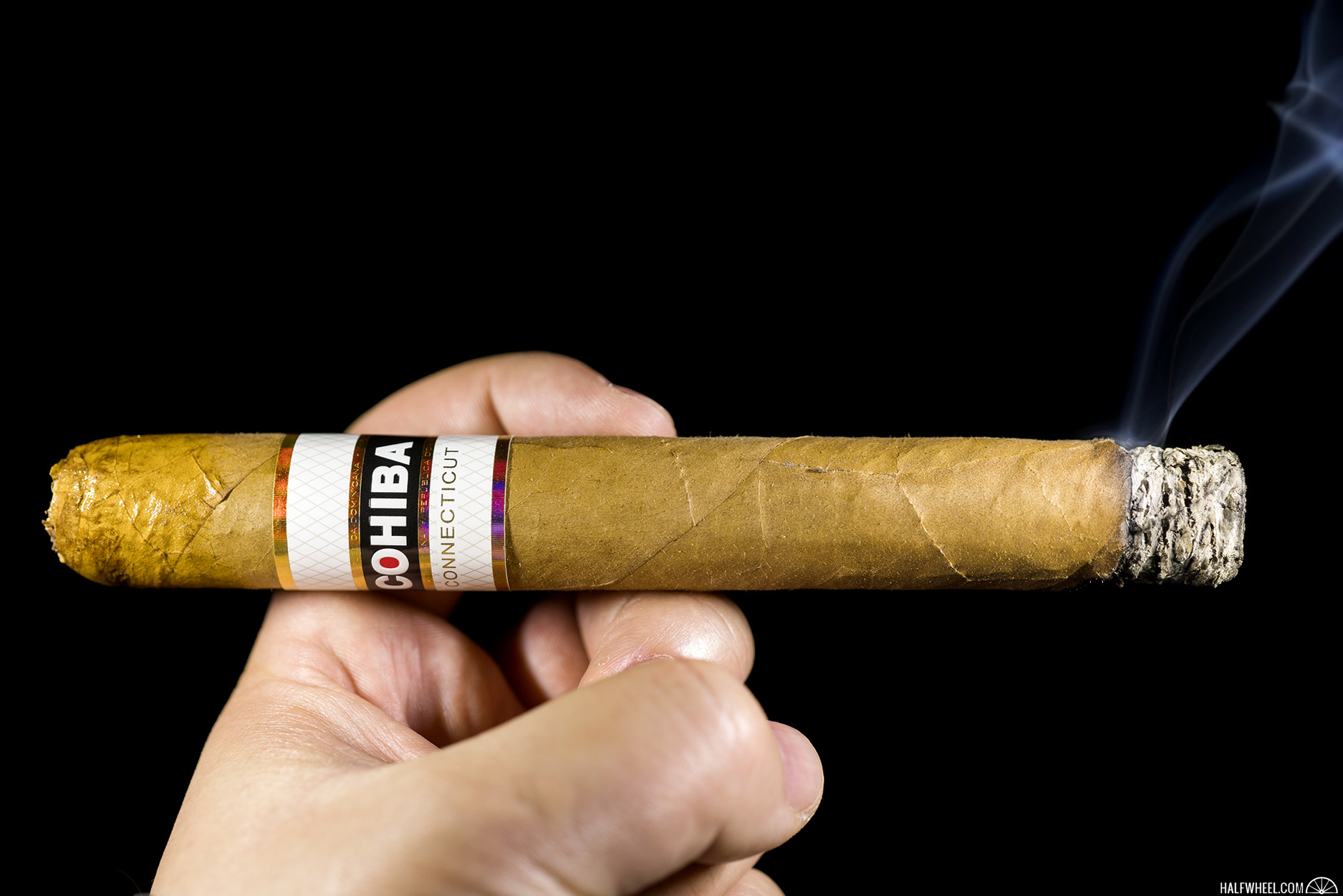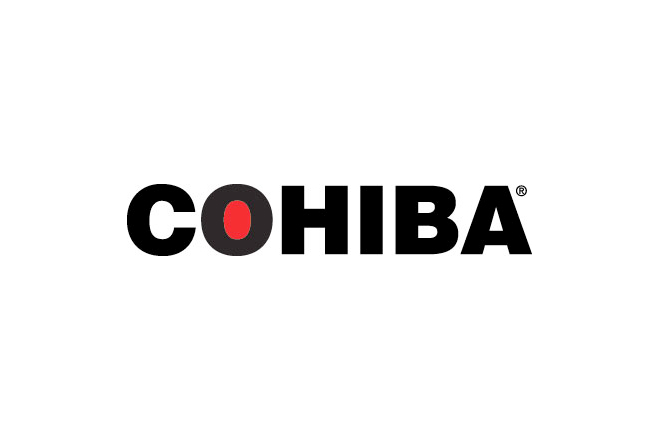If I had to bet which premium cigar brand was the most identifiable by Americans, and probably the world, my choice would be Cohiba. And given that there are two different Cohiba brands—one owned by General Cigar Co. and only sold in the U.S., and the other the Cuban brand sold worldwide—there’s not much one of the two Cohiba brands hasn’t done.
There are Cohibas in just about every size and price point—cigarillos for less than a dollar to 7 x 60s priced at $4,000—but up until this year, there had never been a Cohiba with a Connecticut-seed shade wrapper. That change came thanks to General Cigar Co. and its new Cohiba Connecticut.

While the seed for the wrapper might come from Connecticut, it’s not grown in Connecticut. Rather, like most cigars with a Connecticut wrapper, it’s grown in Ecuador under the clouds in the Los Rios province. Underneath that wrapper is a Mexican San Andrés binder and four fillers: Brazilian mata fina, Dominican olor, Dominican piloto cubano and an unspecified varietal from Jalapa, Nicaragua.
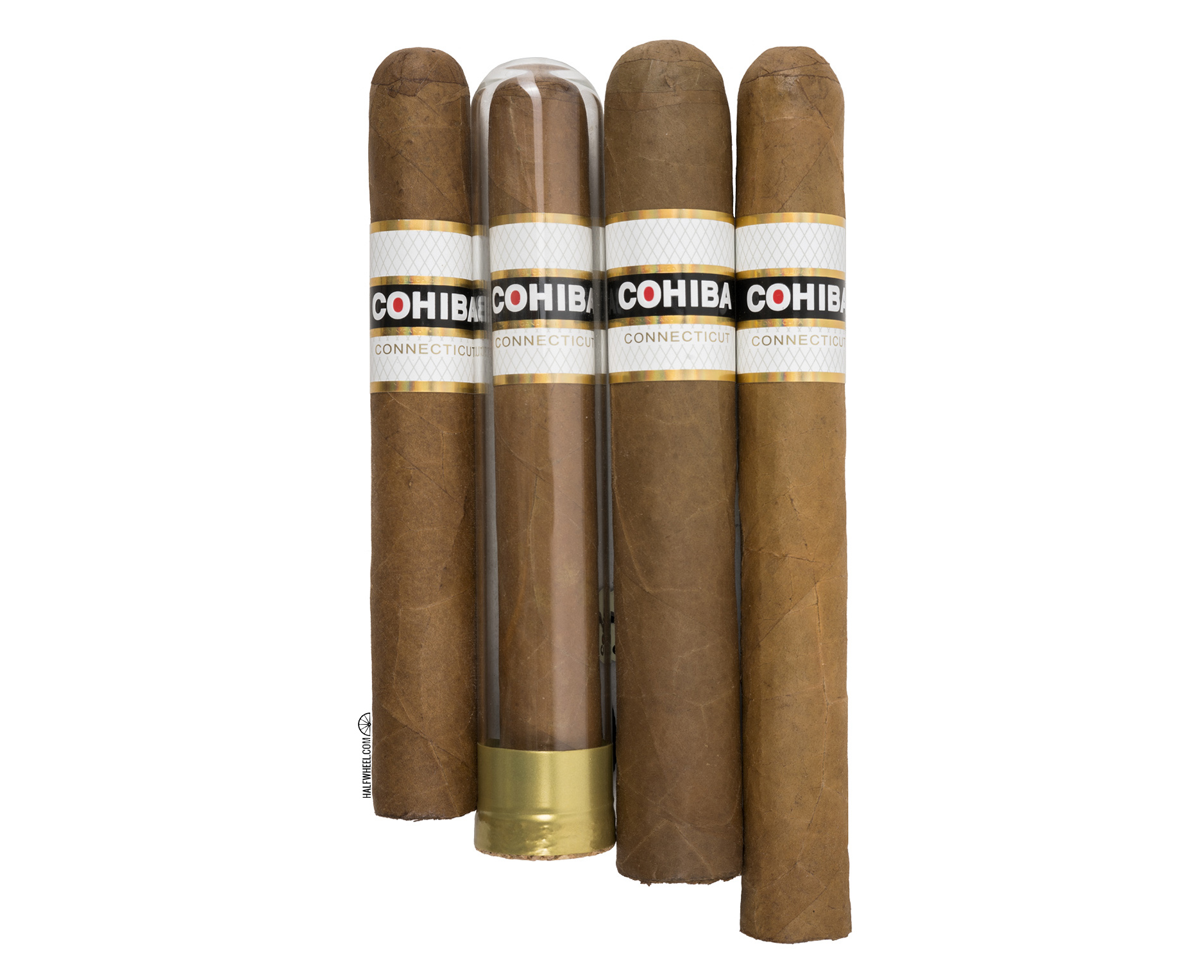
It’s offered in four regular production sizes.
- Cohiba Connecticut Robusto (5 1/2 x 52) — $20.99 (Boxes of 20, $419.80)
- Cohiba Connecticut Robusto Crystal Tubes (5 x 50) — $20.99 (Boxes of 10, $209.90)
- Cohiba Connecticut Gigante (6 x 60) — $22.99 (Boxes of 20, $459.80)
- Cohiba Connecticut Toro (6 1/2 x 52) — $21.99 (Boxes of 20, $439.80)
General began shipping the cigar in March.

- Cigar Reviewed: Cohiba Connecticut Toro
- Country of Origin: Dominican Republic
- Factory: General Cigar Dominicana
- Wrapper: Ecuador
- Binder: Mexico (San Andrés)
- Filler: Brazil (Mata Fina), Dominica Republic (Olor & Piloto Cubano) and Nicaragua (Jalapa)
- Length: 6 1/2 Inches
- Ring Gauge: 52
- Vitola: Toro Extra
- MSRP: $21.99 (Boxes of 20, $439.80)
- Release Date: March 2019
- Number of Cigars Released: Regular Production
- Number of Cigars Smoked For Review: 3
In case you didn’t get the memo by the blend specifications or the price point, the white band on this Cohiba should make it clear this cigar is designed to go after Davidoff. The aroma from the wrapper is acidic with leather and some sand, around medium. In just about every way, the foot is quite different: dried cranberries, coffee beans, vanilla and a smell that reminds me of opening a Kit Kat bar; everything is full and pretty equal. The cold draw has orange creamsicle, creamy peanut butter and some damp woods around medium-full.
The Cohiba Connecticut begins somewhat similar to the cold draw, just a bit lighter and more refined: damp cedar, creaminess and kosher salt. Eventually, those flavors give way to apple cider, honey, cedar and a bit of a bagel-like bread flavor. Retrohales have earthiness, sunflower seeds, raisins and a bit of acidity. The finish of the retrohale has a hamburger-like meatiness and a creaminess, altogether it reminds me a bit like In-N-Out’s combination of salted patties and thousand island, err spread. The flavors are smooth and full while body and strength are both medium-plus. Construction on all three cigars is flawless in the first third.
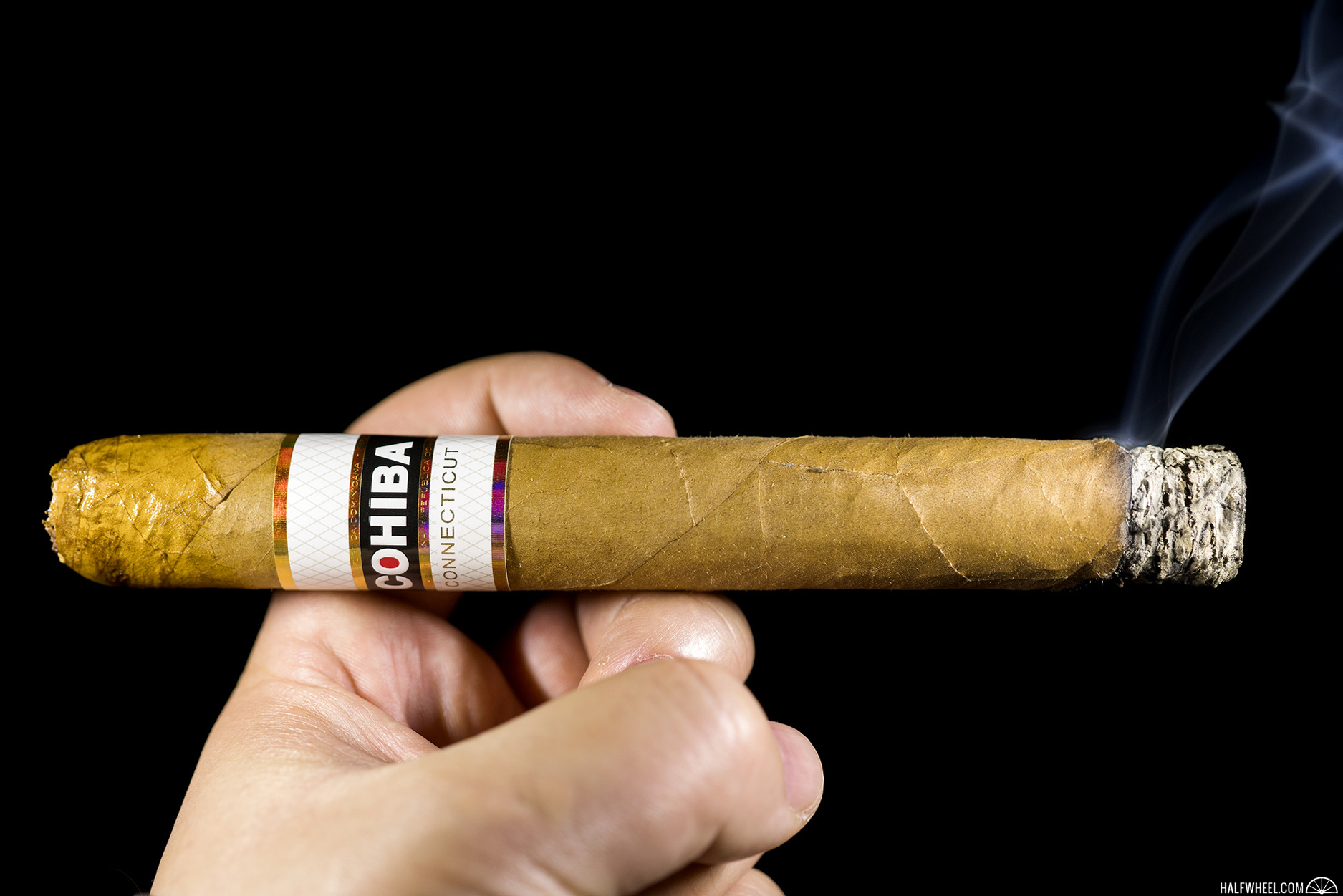
Much like the first third, the flavors in the second third of the Cohiba are unique, but they aren’t the absolute most refined. There is a mixture of soggy cereal, earthiness and some lemon upfront. Retrohaling produces creaminess, a muted raspberry, some generic nuttiness and a bit of jalapeño, the latter of which becomes more prominent non the finish. Flavor, strength and body are all medium-full in the second third. Much like the first third, I don’t have a single reason to complain about the construction.
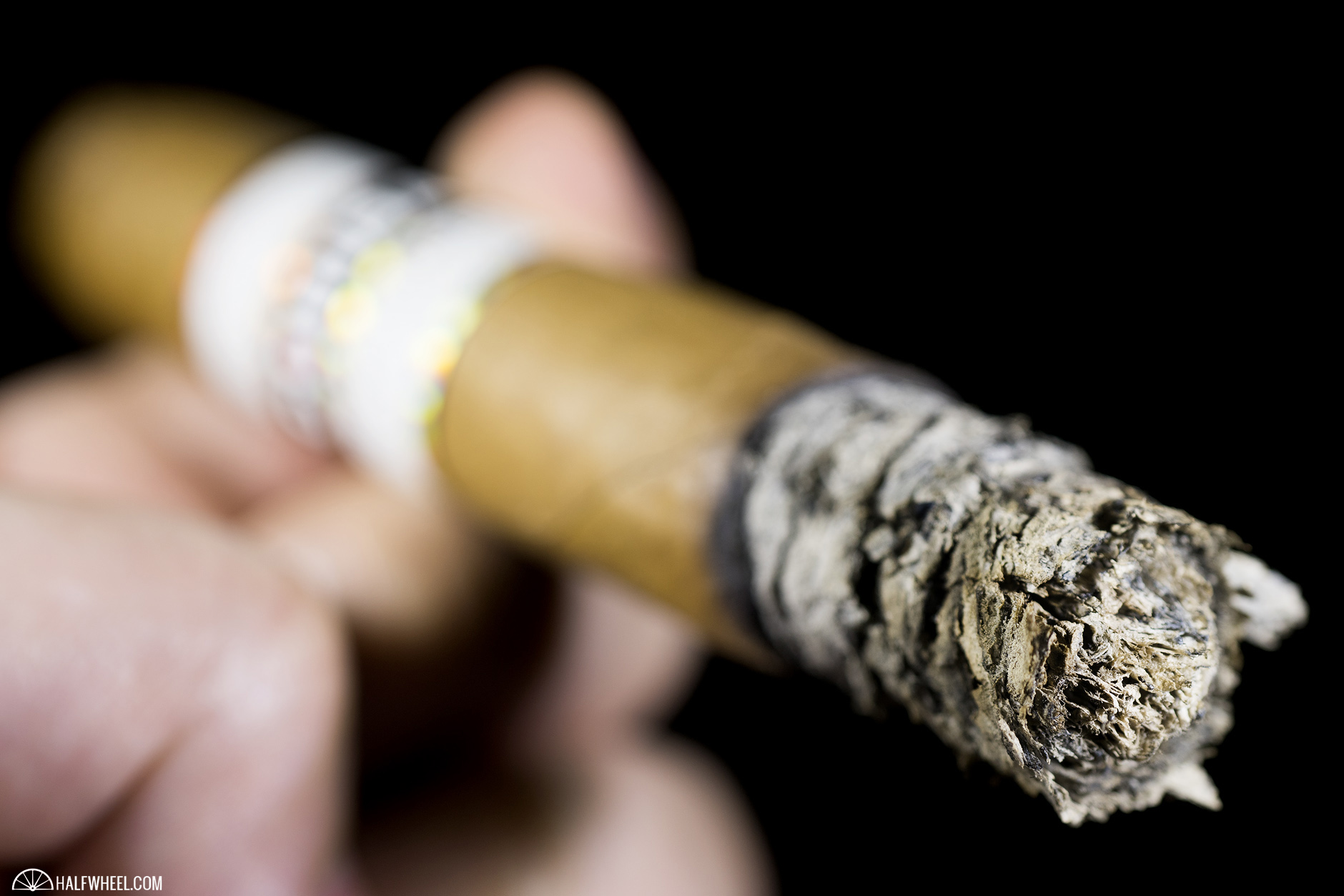
I struggle to find much in the way of differences between the second and final thirds. In terms of the flavors I pick up, there’s really not much of a difference. The soggy cereal is no longer present, leaving a mixture of lemon and earthiness up top while raspberry and creaminess sit just below. Retrohales provide an even more intense raspberry flavor, but the nuttiness and jalapeño salt are also still present. The Cohiba Connecticut’s final third continues the trend of a declining amount of refinement in the flavors, though they are more intense. The cigar is now nearly full in both flavor and body, while strength is still medium-full.
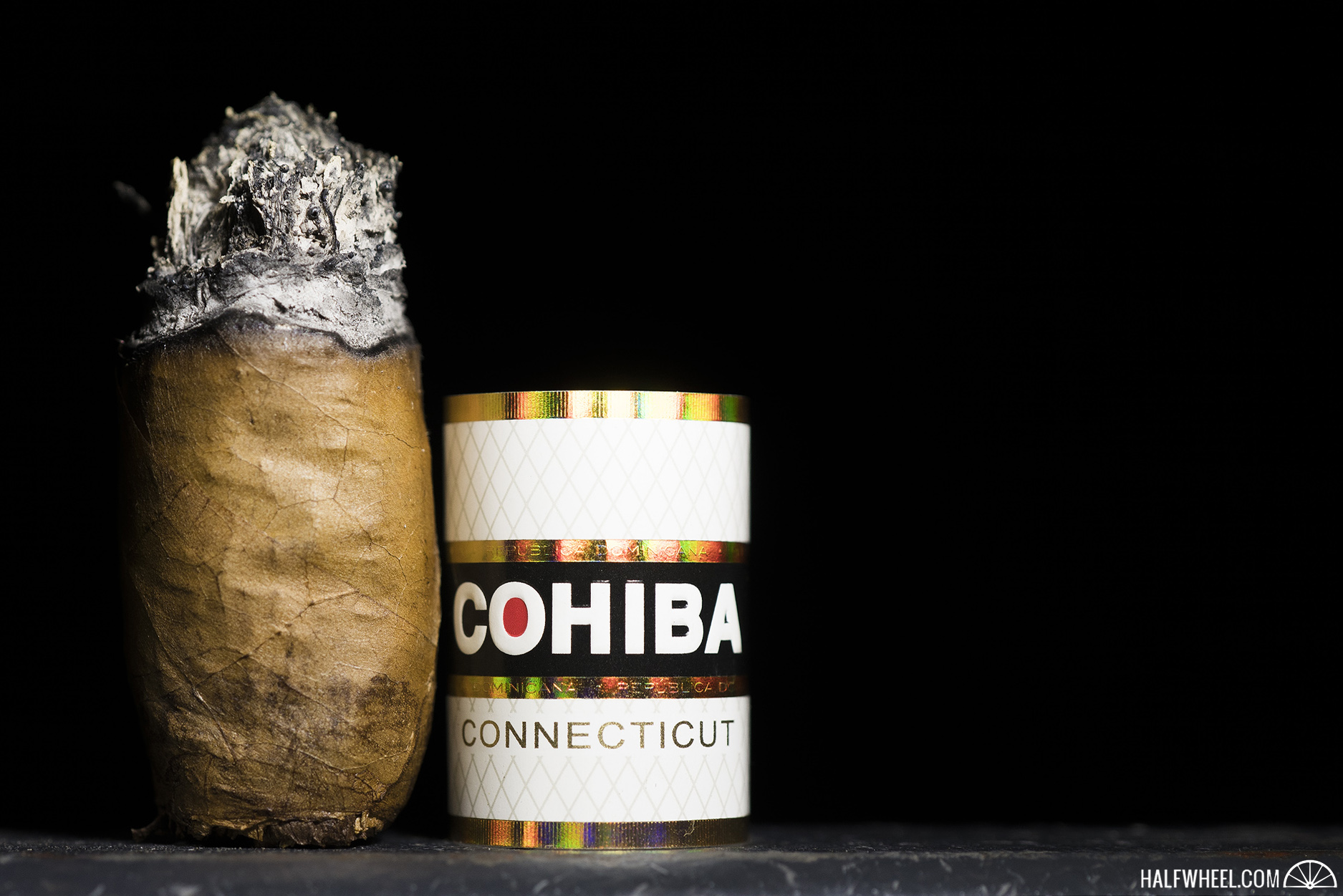
Final Notes
- This isn’t the first Cohiba with a Connecticut wrapper, at least not in the broad terms of Connecticut. The Cohiba Black uses a Connecticut broadleaf wrapper, which is not what most people think of when you say, “Connecticut wrapper.” That being said, this wrapper is neither grown in Connecticut nor grown under shade.
- Growing wrapper in Ecuador under the clouds is not that uncommon. Oliva Tobacco Co. grows the tobacco which is used on a lot of cigars, most notably the Ashton VSG. For what it’s worth, General Cigar Co. says it is working with an “independent grower” for this release.
- I’m a big fan of the packaging. The band is just a grander version of the white band featured on the Cohiba Puro Dominicano. And the boxes are great, capped off with that subtle red dot on the front assembly.
- Given the value-priced Cohiba Blue, the Cohiba Connecticut seems to make much more sense for the brand, one that General Cigar Co. considers a flagship.
- This release reminds me very much of the Padrón Dámaso, another attempt to clearly go after Davidoff and to a lesser degree Ashton Classic, two stalwarts of high-end cigar shops around the world. For a lot of different reasons, this cigar didn’t seem to inspire the same sort of reaction as the Dámaso.
- While I don’t think this tastes like most Davidoffs, I find it apropos that General used Dominican olor tobacco in the filler. It’s a tobacco that many companies use, but no one uses it as prominently as Davidoff. I’m also of the belief that olor produces much of the mustiness that many people dislike about Davidoffs.
- Despite my comments about the refinement of the flavors, I think this is easily in the top 10 percentile of overall complexity for cigars on the market today. My issue was that—particularly after the first two inches—the refinement and depth of the individual flavors didn’t match the flavors that I found in the cigar.
- Construction was great on all three cigars.
- Final smoking time was two and a half hours on average.
- General Cigar Co. advertises on halfwheel.
- Cigars for this review were purchased by halfwheel.
- Site sponsors Atlantic Cigar Co. and Corona Cigar Co. carry the Cohiba Connecticut Toro.
If you go at the king you must not miss. I don’t think that many of the people regularly smoking Davidoff or Ashton Classic will probably give the Cohiba Connecticut Toro a shot, and I don’t think this stands up to either in many ways, but this is the best Dominican-made Cohiba I’ve smoked. While everything about this says Davidoff Signature competitor, it’’s a much different profile and one that can stand on its own against most cigars in the humidor. While a lot less expensive than the last Cohiba we reviewed, the price will be an issue for many, but a good cigar is a good cigar and this is exactly that.

